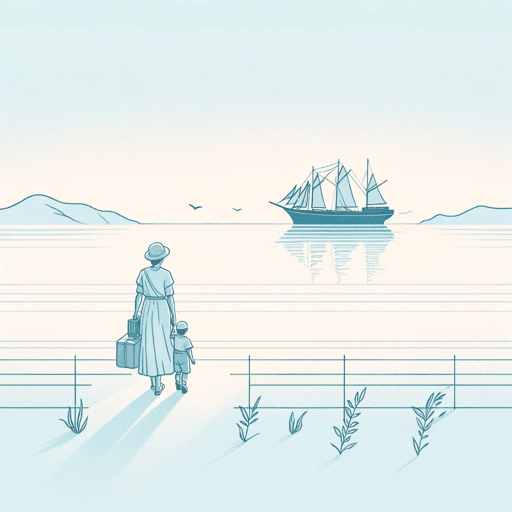29 pages • 58 minutes read
Edith Maude EatonIn the Land of the Free
Fiction | Short Story | Adult | Published in 1912A modern alternative to SparkNotes and CliffsNotes, SuperSummary offers high-quality Study Guides with detailed chapter summaries and analysis of major themes, characters, and more.
Literary Devices
Juxtaposition
Juxtaposition is a comparison of two elements to highlight their differences. “In the Land of the Free” juxtaposes law and reason with emotion and sentiment to enhance the text’s focus on the value of motherhood and maternal instincts. In the first scene, for example, the customs officials continually emphasize that they are merely doing their job and adhering to the law of the land. Their objective detachment from the highly charged situation makes Hom Hing and Lae Choo’s emotional pleas even more palpable. The use of juxtaposition also illustrates how the law itself causes this situation, as the law lacks the necessary sentiment and sympathy that would prevent this family from being separated. With this, the story’s title, “In the Land of the Free,” stands in contrast with the story’s content, emphasizing The Limits of Freedom.
Tone
“In the Land of the Free” relies on a tone that combines journalistic observation with emotional intensity. Likely drawing on her background as a journalist, Eaton often conveys the situation of Hom Hing and Lae Choo in a very matter-of-fact way, such as when she states, “Thus was the law of the land complied with” (5).

